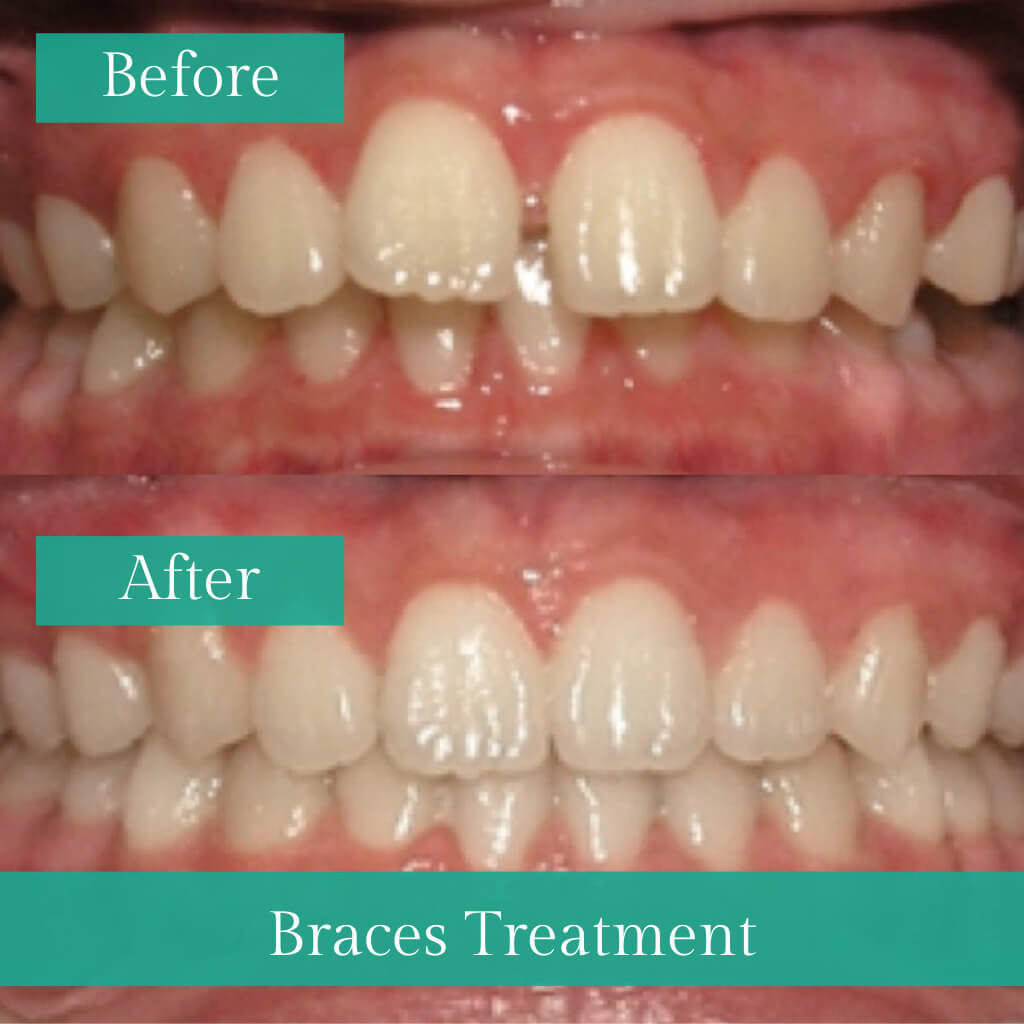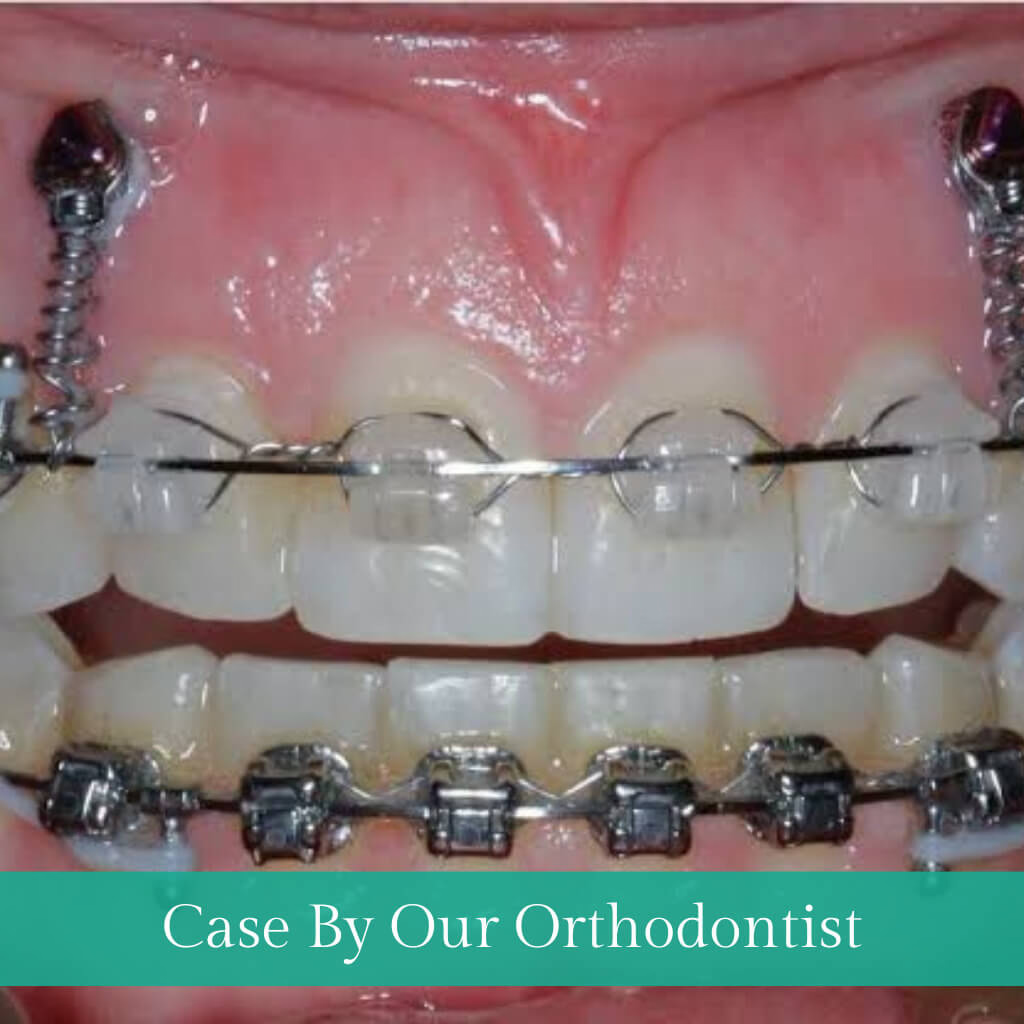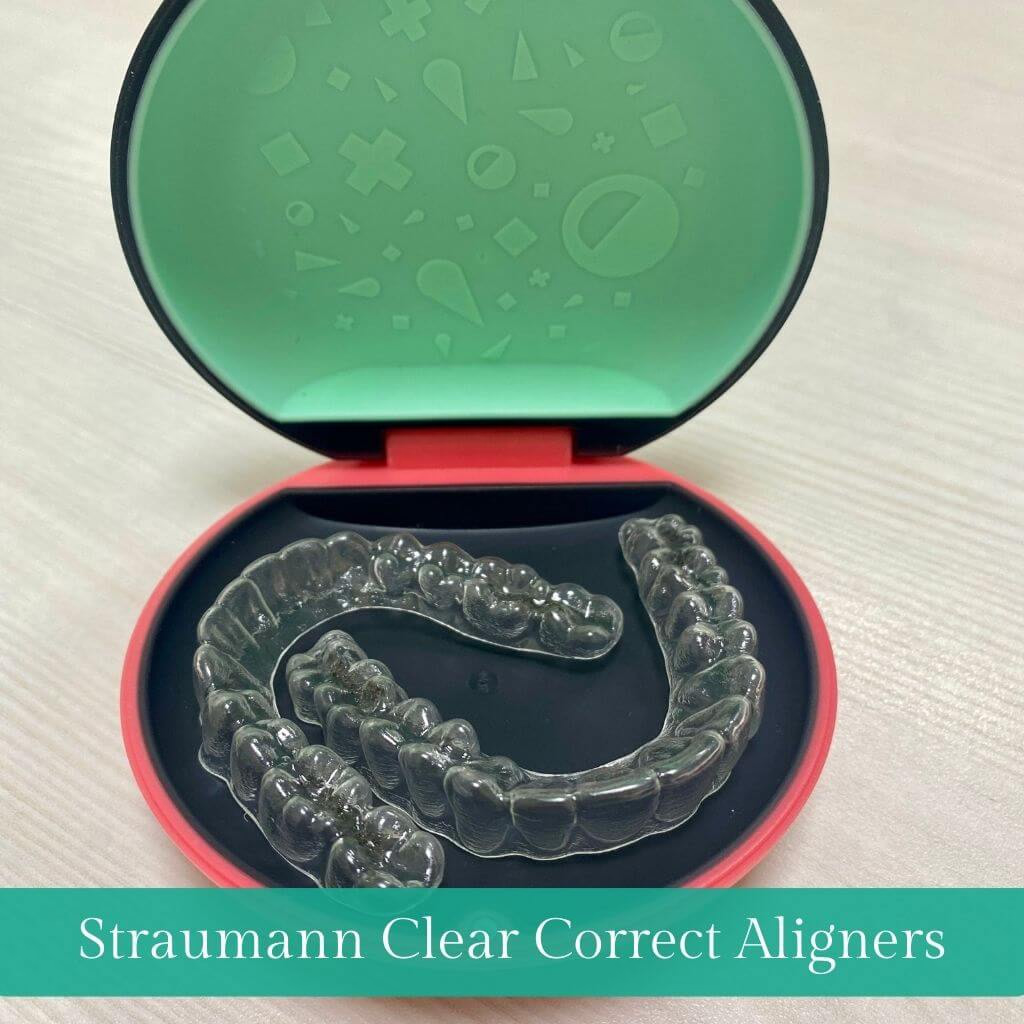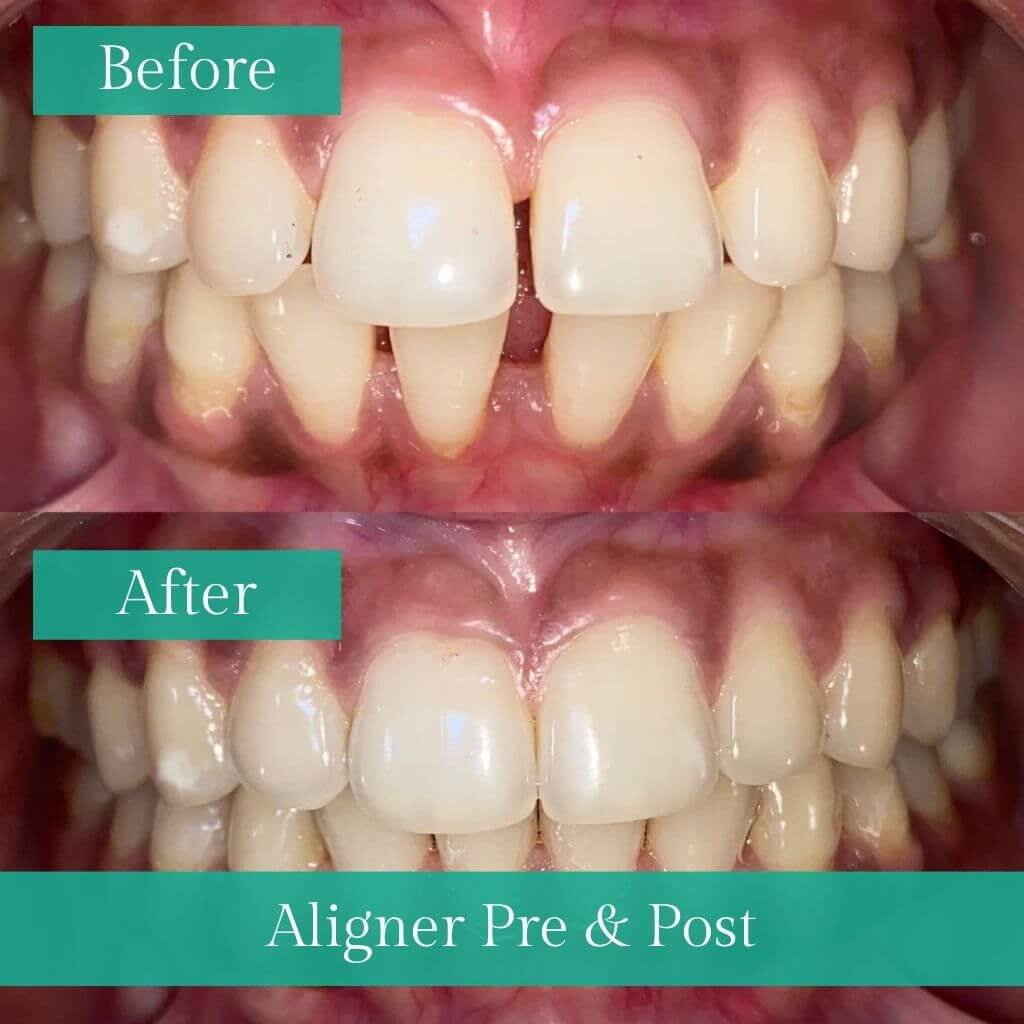Braces Vs Aligners: Which Will Suit You Better and Why?
Are you torn between braces and aligners?
On the one hand, braces are the traditional and time-tested choice, but on the other, aligners offer a more discreet, latest and advanced option. It can be a difficult decision, so let's compare the two and see which one will best suit your needs.
In this article, we'll discuss the factors to consider when choosing between braces and aligners.
Key Takeaways
- Braces are effective for complex orthodontic issues but are noticeable and require more extensive oral care.
- Clear aligners are discreet, comfortable, and removable, making them ideal for mild to moderate cases. With additional adjuncts, aligners, such as Invisalign, can also be used to treat complex orthodontic problems, but they require compliance and adherence to protocol on the patient's end.
- Your choice should consider the severity of your orthodontic problems, aesthetic preferences, lifestyle, and treatment duration.
- Book an appointment with us today for a personalized recommendation based on your unique needs!
- The ultimate goal is a healthy, beautiful smile that boosts confidence, regardless of the method chosen.
Braces
Braces are orthodontic devices that have been a traditional and trusted method for straightening teeth for many decades. They involve brackets made of metal or ceramic affixed to the teeth, connected by wires. Braces exert continuous pressure on the teeth, slowly guiding them toward their intended alignment. An orthodontist usually adjusts them periodically to ensure the teeth shift as planned.
How Do Braces Work
Braces work by applying continuous, controlled pressure on the teeth. The brackets, wires, and bands in the braces system guide the teeth into their desired positions. As this pressure is applied, it stimulates the process of bone remodelling, where the bone surrounding the tooth gradually adjusts to accommodate its new position.
Orthodontists make periodic adjustments to the braces, tightening the wires as needed to maintain the desired direction and force for tooth movement. Over time, this process results in the gradual realignment of the teeth and correction of various orthodontic issues, such as misalignments, overcrowding, or bite problems.
Advantages of Braces
- Effective for Complex Cases: Braces are highly effective in treating various orthodontic issues, including severe misalignments, overbites, underbites, and crowding.
- Controlled and Predictable: Orthodontists have precise control over the movement of teeth with braces, ensuring predictable and efficient results.
- Durability: Braces are typically very durable and can withstand daily wear and tear. Disadvantages of Braces
- Aesthetic Concerns: The most common drawback of braces is their noticeable appearance, which can be a source of self-consciousness, particularly for adults.
- Oral Hygiene Challenges: Proper oral hygiene can be more challenging with braces, as they can trap food particles and require extra care during cleaning.
Which Orthodontic conditions do braces help correct
Braces are versatile and can address a wide range of orthodontic issues, including:
- Crooked or misaligned teeth
- Overbites and underbites
- Crossbites
- Crowded teeth
- Gaps between teeth
- Jaw misalignments
Treatment Duration for Braces
- Mild Cases: For individuals with mild orthodontic issues, such as minor crowding or spacing, treatment with braces can typically last around 12 to 18 months.
- Moderate Cases: Moderate cases, which may involve correcting more extensive misalignments or bite issues, can take approximately 18 to 24 months.
- Severe Cases: In cases of severe misalignment, overbites, underbites, or complex orthodontic problems, treatment with braces may extend to 2 to 3 years or more.
Aligners
Clear aligners, such as Invisalign, are a more modern approach to orthodontic treatment. They are made of clear, BPA-free plastic and are custom-fitted to your teeth. Aligners work by applying controlled force to move your teeth into their correct positions gradually. A series of aligners is provided, each slightly adjusted to facilitate this movement.
How Do Aligners Work
Clear aligners use a series of custom-made, transparent plastic trays designed to fit snugly over your teeth. These aligners are worn continuously except when eating, drinking, brushing, and flossing. Each set of aligners in the series is slightly different from the previous one and is designed to make incremental adjustments to the alignment of your teeth.
As you advance through the sequence, your teeth slowly move into their intended positions. The process is based on controlled and gradual force application, ensuring that your teeth move efficiently and predictably.
Advantages of Aligners
- Aesthetic Appeal: Clear aligners are nearly invisible, making them an attractive option for individuals concerned about traditional braces' appearance.
- Removable: Aligners are removable, enabling you to eat, brush, and floss with ease, promoting improved oral hygiene and dietary flexibility.
- Comfort: Aligners typically offer greater comfort than braces since they don't have wires and brackets that can lead to irritation.
- Predictable Results: The treatment plan with aligners is computer-generated, offering high predictability in achieving the desired results.
Disadvantages of Aligners
- Limited Use: Aligners are unsuitable for all orthodontic issues, especially severe cases. They are usually advised for cases of mild to moderate severity.
- Compliance: Success with aligners depends on the patient's commitment to wearing them for the recommended 20-22 hours daily. Failure to do so can prolong treatment or alter outcomes.
Which Orthodontic conditions do aligners help correct
Clear aligners are effective for correcting the following orthodontic issues:
- Mild to moderate concerns with crowding or spacing
- Mild overbites and underbites
- Mild to moderate crossbites
- Relapse cases (for individuals who have had previous orthodontic treatment)
Treatment Duration for Aligners
- Mild Cases: For individuals with mild crowding or spacing issues, treatment with clear aligners can often be completed in approximately 6 - 12 months.
- Moderate Cases: If you have moderate orthodontic issues, including minor bite problems, the treatment may extend to 12 to 18 months.
- Severe Cases: In more severe cases, particularly those involving significant bite problems or complex misalignments, clear aligner treatment can take 18 months or more. Adjuncts such as elastics, buttons, etc, may be given to accelerate and assist teeth movements.
Factors to weigh when deciding between braces and aligners
When faced with the decision of choosing between braces and aligners for orthodontic treatment, there are several important factors to consider. Each factor is pivotal in determining the option that best aligns with your unique needs and preferences.
Orthodontic Needs
The severity and type of orthodontic issues you have are one of the primary factors in determining whether braces or aligners are the better choice. Braces are versatile and can successfully address a broad spectrum of issues, such as severe overbites, underbites, crossbites, misalignments, crowded teeth, and gaps between teeth. If your case is complex or you have significant bite problems, braces may be the more appropriate option due to their greater control over tooth movement. However, clear aligners can provide a suitable solution if your issues are mild to moderate, particularly if aesthetics concern you.
Aesthetic Preference
Your personal aesthetic preferences and how you feel about the appearance of your orthodontic treatment are crucial. Braces are noticeable and can be a source of self-consciousness, especially for adults. In contrast, clear aligners are nearly invisible, making them an attractive option for those who want a discreet treatment that doesn't affect their appearance. If the idea of having metal brackets and wires on your teeth concerns you, aligners might be the better choice.
Lifestyle and Compliance
Consider your ability to commit to the treatment plan. Clear aligners can be removed, enabling you to eat, brush, and floss without hindrance. This flexibility can be advantageous for those with busy lifestyles or who enjoy certain foods that might be off-limits with braces. However, it's essential to wear aligners as instructed (typically 22 hours a day) for the treatment to be effective. If you are responsible and consistently comply with this requirement, aligners could be a great choice. On the other hand, if you prefer a fixed orthodontic appliance that you don't need to remove, braces may be more suitable.
Comfort and Maintenance
Comfort and ease of daily maintenance are important considerations. Braces can cause discomfort, particularly during the initial adjustment phases, and the wires or brackets may occasionally irritate the cheeks and lips. Clear aligners are generally more comfortable, being smooth and without any protruding components. Oral hygiene maintenance is easier with aligners as they can be taken out when brushing and flossing. If you value comfort and convenience in your orthodontic treatment, aligners may be the preferred choice.
Treatment Duration
The expected duration of treatment can also influence your decision. Aligners are often associated with shorter treatment durations in some cases. If you're looking for a quicker solution and are a suitable candidate for aligners, this factor may favour clear aligners over braces.
Age
Age can also be a factor in your decision. Many adults prefer the discreet nature of clear aligners, while children and teenagers may not be as concerned about the appearance of braces. Your age and personal preferences may impact your choice.
Feasibility of periodic visits
Braces require periodic visits to the dental office as planned, typically every 3-6 weeks. Aligners are changed by the patient in the comfort of their home as all the trays are delivered to the patient in one go. People who travel frequently or cannot visit the clinic physically for periodic orthodontist appointments can opt for aligners for convenience and avoid delays in treatment.
FAQ’s
Conclusion
In conclusion, the choice between braces and aligners depends on individual factors such as orthodontic needs, personal preferences, and lifestyle. It's essential to consult with an orthodontist who can provide a professional assessment and guide you toward the most suitable treatment for your unique situation. Both braces and aligners offer their own advantages, and the correct choice will lead you to a straight and attractive smile that you'll be proud of.
In the end, remember that the goal is the same: to achieve a healthy and beautiful smile that enhances your confidence and overall well-being. Whether you choose braces or aligners, the journey to a straighter smile is an investment in your future oral health and self-esteem!
To know more, book your appointment today at Hope Dental & Esthetic Clinic, Noida!






